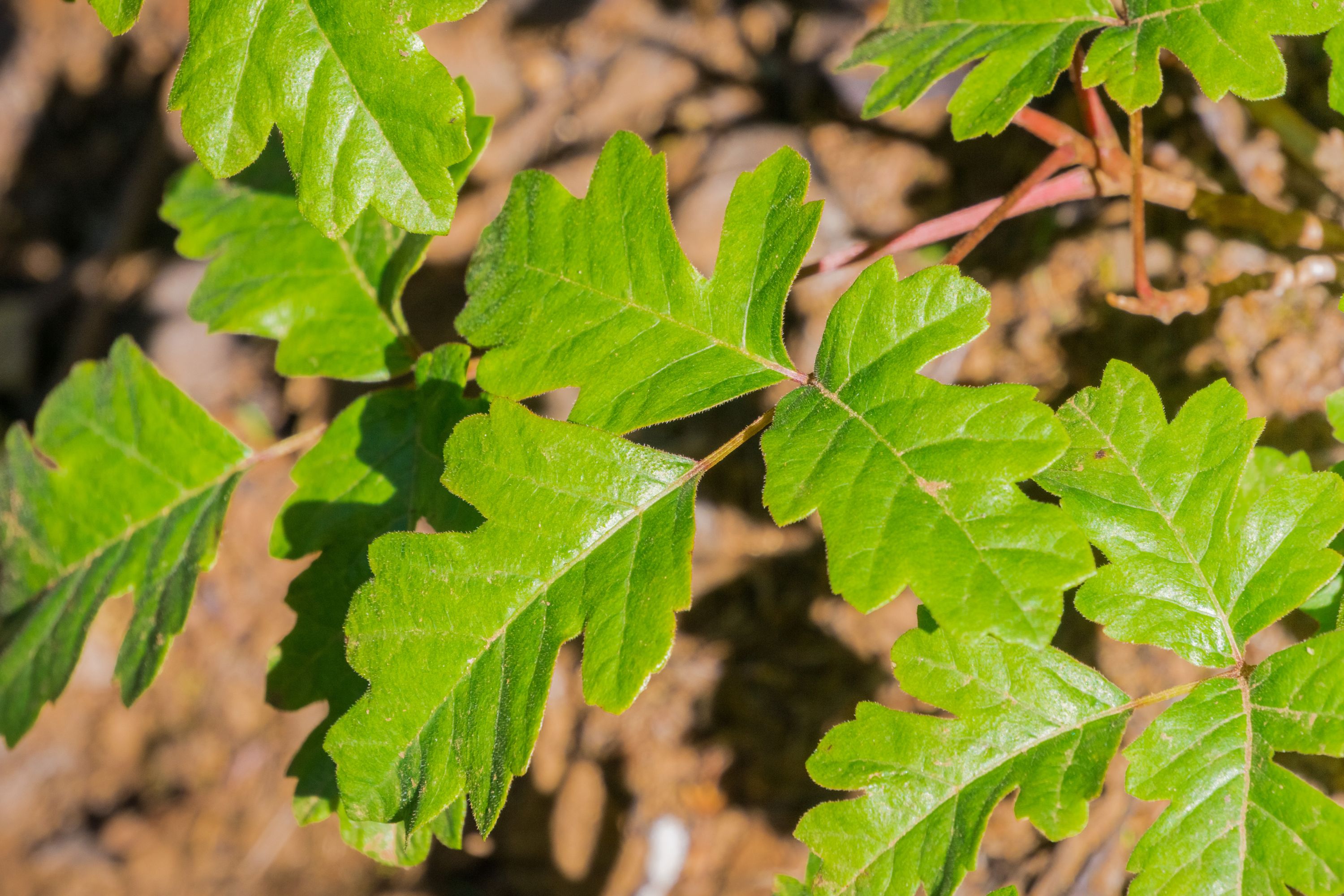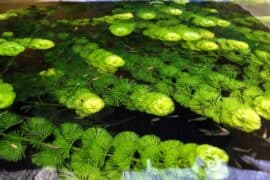Pacific poison oak
(Toxicodendron diversilobum)

Description
Toxicodendron diversilobum, commonly known as Western poison oak, is a woody vine or shrub that is native to western North America. This plant is well known for causing a rash on the skin when touched, due to the presence of an oil called urushiol in its leaves, stems, and roots. In this article, we will explore the characteristics, distribution, ecology, and management of Toxicodendron diversilobum. Taxonomy Toxicodendron diversilobum is a member of the Anacardiaceae family, which also includes the genus Rhus. The plant was first described in 1825 by the German botanist Carl Sigismund Kunth. It was originally classified as Rhus diversiloba, but in 1969 it was reclassified as Toxicodendron diversilobum. Description Toxicodendron diversilobum can grow as a woody vine or a shrub, and it can reach heights of up to 3 meters. Its leaves are deciduous, and they are arranged alternately along the stem. The leaves are composed of three leaflets, each of which is lobed and toothed. The leaflets are typically 3 to 10 centimeters long, and they are shiny on the upper surface and dull on the lower surface. The plant produces small, greenish-white flowers in the spring, which are followed by green berries that turn white or yellow in the fall. Distribution Toxicodendron diversilobum is native to western North America, and it is found from southern British Columbia to northern Baja California. The plant is most common in California, where it is found in a variety of habitats, including chaparral, oak woodlands, and riparian zones. Ecology Toxicodendron diversilobum is an important plant in many ecosystems because it provides food and habitat for a variety of animals. The berries are eaten by birds and mammals, and the leaves are eaten by deer and other herbivores. The plant also provides shelter and nesting sites for birds and small mammals. Toxicity The most well-known aspect of Toxicodendron diversilobum is its ability to cause a rash on the skin when touched. This is due to the presence of urushiol, an oil that is found in the plant's leaves, stems, and roots. Urushiol can cause an allergic reaction in most people, and the rash can be extremely uncomfortable and last for several weeks. In severe cases, the rash can cause blistering and oozing sores. Management If you encounter Toxicodendron diversilobum, it is important to take precautions to avoid contact with the plant's urushiol oil. Wear long pants and sleeves, and consider using gloves when handling the plant. If you do come into contact with the plant, wash the affected area with soap and water as soon as possible to remove the oil. If a rash develops, over-the-counter treatments such as calamine lotion and hydrocortisone cream can provide relief. In severe cases, a doctor may prescribe oral steroids to reduce inflammation. In natural areas, the management of Toxicodendron diversilobum is challenging because of its ecological importance and its ability to quickly regrow after removal. In some cases, prescribed burns can be used to control the plant, but this method requires careful planning to avoid damaging other vegetation. In urban areas, the plant can be managed through herbicide treatments or mechanical removal. Conclusion Toxicodendron diversilobum is an important plant in many ecosystems of western North America, but it is also well-known for its ability to cause a rash on the skin when touched.
Taxonomic tree:







